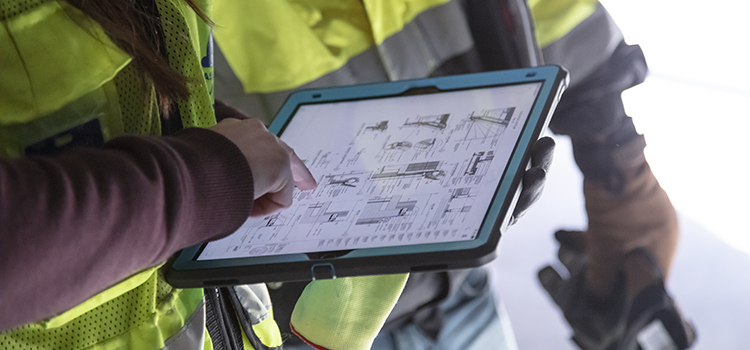This post is sponsored by U.S. CAD
Bidding for a project is often a lengthy, detailed and dynamic process. Can BIM platforms known for creating project management efficiencies on-site also help before the contract is won? Absolutely, says Aaron Wagner, a solutions consultant for U.S. CAD.
A bid is a project and should be managed as such, with the bidder providing transparency to stakeholders and assuring accountability. The right tools can help, as can an understanding of the dynamic transparency required for today’s projects. Here are Wagner’s thoughts on the industry and on what it takes to win a bid today.
Will bidding requirements change due to the coronavirus?
Before the pandemic, everything had to be faster, smarter, cheaper. Now the priority is on keeping everyone safe. We need to monitor and take measures to control that, all while staying competitive. Owners and developers need to know all these things are being considered and their bidders are demonstrating an ability to perform at their best, while mitigating the worst. Autodesk Construction Cloud offers tools to record, measure and react in near real-time.
How is the industry reacting to our current global condition?
In some areas, we saw work progress with little impact, and we also watched a lot of companies and projects forced to close. Builders are ready to get back, and we’re starting to see developers anxious to move forward as well.
Are there more effective ways to collaborate on a project?
We have project members able to work from home, and others who need to be productive on-site. It’s critical for them to function together in a constant, reliable data structure. Autodesk Construction Cloud is the best-in-class common data environment that enables this, with workflow support for all aspects of a project lifecycle.
Which bidding steps most benefit from using BIM?
Showing that bidders understand developers’ needs and can demonstrate performance capabilities, reliability and safety is key. BIM is an acronym that defines a process more than anything else. Bidders should demonstrate how their processes and data structures give them a competitive edge.
Agility is a selling point, but how can it be proven in a bid?
Project flexibility is hard to demonstrate without data. But even more important is showing the ability to share data-driven results via a tool that works with dynamic features, while also protecting data integrity. Autodesk Construction Cloud is a great way to show the clients that capability.
To really appreciate a bid that incorporates BIM, should clients be educated in BIM?
“BIM” is one of the most overused terms in our industry. “BIM” needs to be defined at the project level based on objectives and goals. Autodesk Construction Cloud as a platform can support most, if not all, BIM objectives. It doesn’t require that a bidder can create 3D models, but instead has a resource to facilitate the defined outcomes.
What are some ways a bidder can demonstrate effectiveness to a potential client’s objectives?
Research sample BIM plans online and underline the supporting workflows you can compete on. Then line up partners that can support you in the rest. Finally, and possibly most important in current times, demonstrate how you measure it, maintain thorough collaboration with reliable data structures, and boost productivity while maintaining safety. These are all things that put companies who use Autodesk Construction Cloud in the competitive lead.
Aaron Wagner, Solutions Consultant, U.S. CAD
Aaron Wagner started his career in architecture in 1998. Wanting to apply that knowledge to the wider building industry, he transitioned to assisting design engineers, contractors and owners. Aaron is specialized in determining and implementing solutions that first understand where teams are coming from, what their weighted objectives are, and the necessary paths to achieve those objectives. He has been developing and delivering training, resources, roadmaps and implementation plans for several years across the entire building industry, including for some of the most prominent names in the industry.
